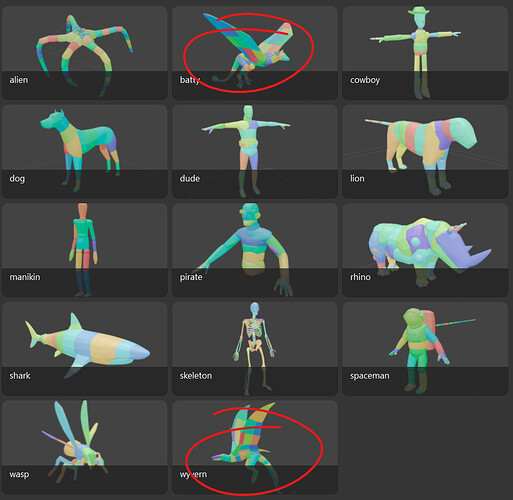Great work, thanks for sharing the progress!
Looks solid, the true test is applying some default skinning and rotating the joints to see whether (1) skinning holds up and (2) rotation axes feel natural. For example, you should expect that when you rotate the knee, that double-knee you’ve got and foot that the same axis, e.g. Z in your case, should fold them nice together nicely. It will make it easier to both animate and tune Ragdoll’s limits.
I would avoid the temptation to assign markers to each knuckle, and instead assign one to just the foot joint and then replace the mesh with the entire foot mesh, toes included. The dog example above is a good way to split up the mesh. That way, you’ll get one big block for the foot, as opposed to each toe separately. That will get you started without overcomplicating things, and then later if you find yourself needing toe motion and contacts, I would go in and add them. But your primary challenge will/should be the overall body first. Each foot is generally as complex as the entire body, both to animate and to setup. So delay it as long as you can.
For wings, there are a few ways to go about it. I would recommend you start with this approach, which keeps the wings together by distance constraining their tips together.
https://www.youtube.com/watch?v=Zf-aNFNpnT8
For the most realistic approach, we’ve found that you’ve got in the “batty” and “wyvern” examples of the Ragdoll asset browser to be the most solid.
That’s if you want the wing deformation to participate in the simulation, to get turbulence and secondary motion to come along, and generally behaves the best.
